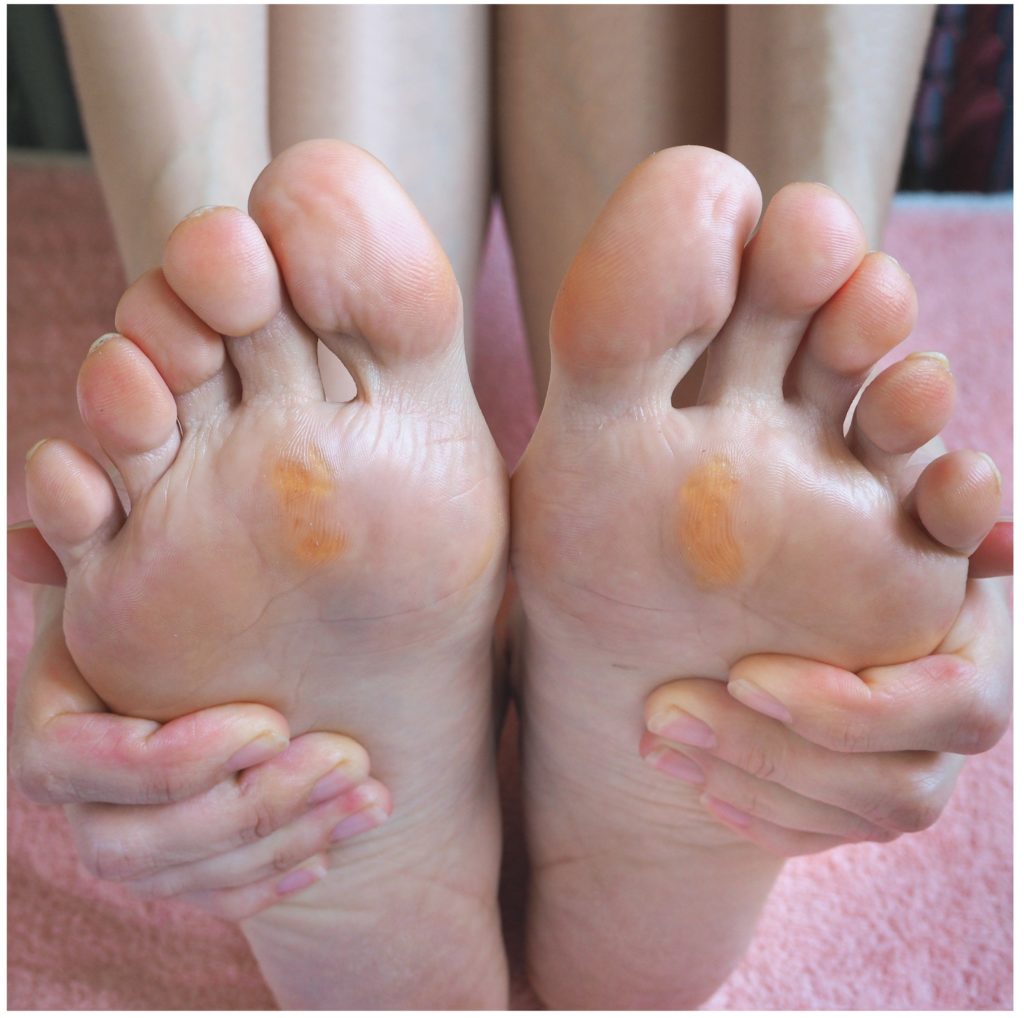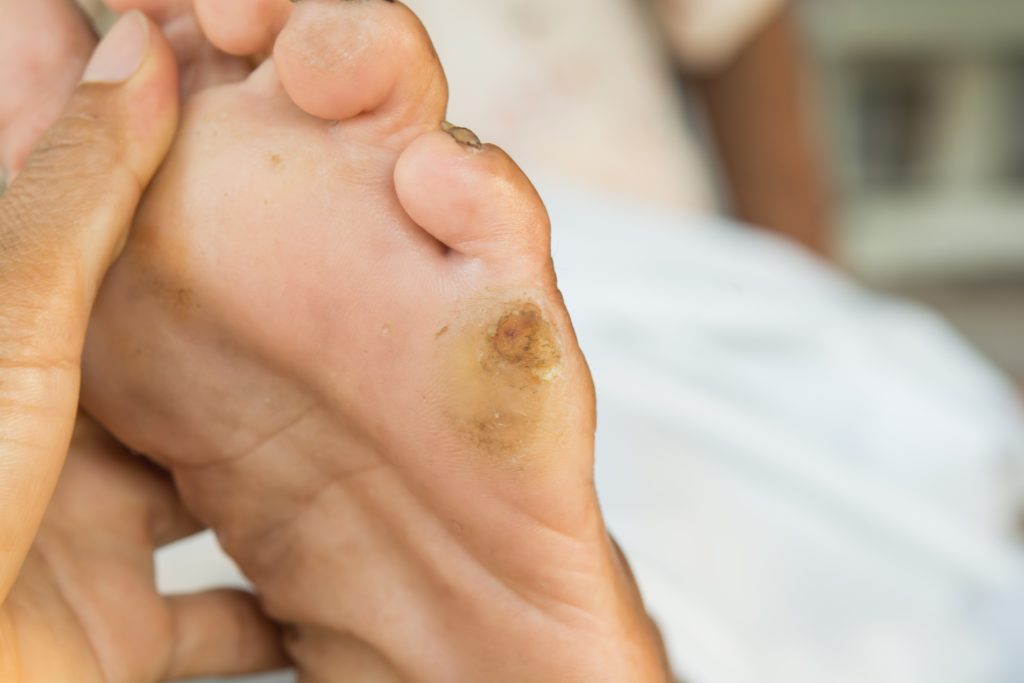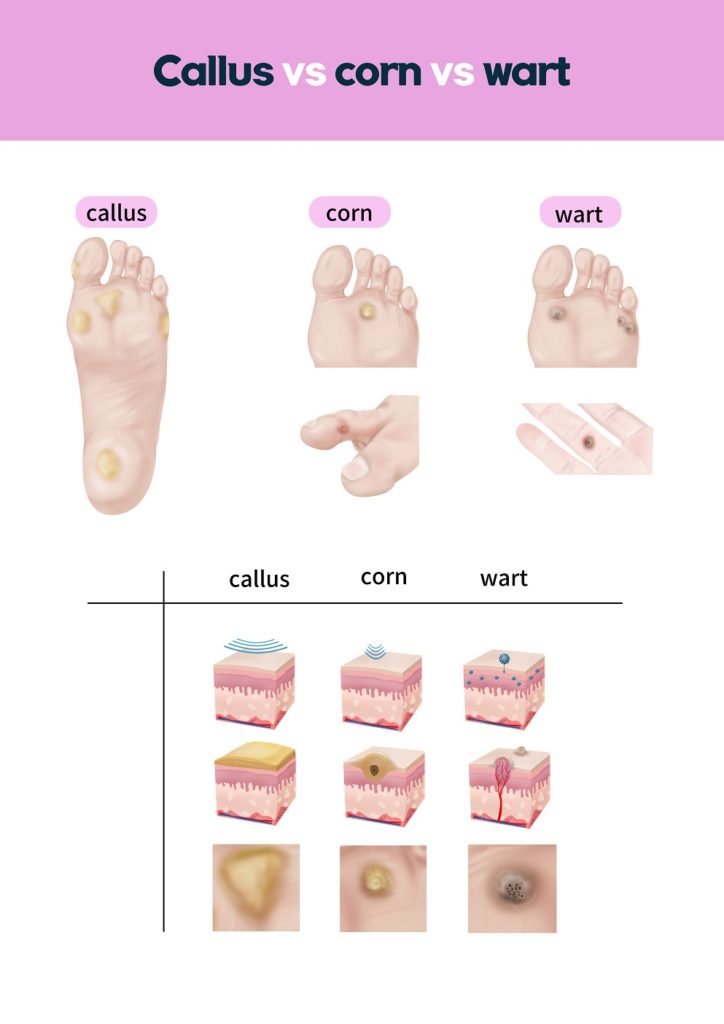What a Podiatrist Can Do For YOU!
How do podiatrists remove corns? [Does insurance cover corn removal?]
Do you have painful toe corn, foot corn, or callus on your foot? We review podiatrist corn removal cost & podiatrist corn removal treatment!
If you need podiatrist corn removal near me, we offer the best-rated Michigan podiatrist treatment and no-obligation consultations!
- We accept most major types of insurance.
- We do our best to keep costs low and are available for corn and callus treatment with excellent results!
Table of Contents
Podiatrist corn removal near me:
You might be here if you ask the question, “Who is the best podiatrist for corn removal near me?” We want to be the answer to that question!
- We have board-certified podiatrists in both surgery and podiatric medicine.
- We accept most major insurances.
- We aim to provide the lowest cost for corn removal with the best results.
- We believe we have the best local rating and have the friendliest doctors for foot care!
- Let us show you why we want to be your choice for the question “Who is the best podiatrist for corn removal near me!”
Podiatrist Corn Removal:
Corns are thick and hardened layers of skin that occur when your skin tries to protect itself from pressure and friction. Corns most often develop on fingers, toes, hands, and feet. If a corn does not bother you and you are otherwise healthy, you need not get treatment. Simply by eliminating the source of pressure and friction, you can get rid of a corn. However, if you are a diabetic patient or have conditions leading to reduced blood flow to your feet, a corn can be a risk for further complications. Therefore, if you suffer from such conditions, get proper care for corns early.
What are the causes of corn?
Pressure and friction by repetitive actions can give rise to corns, and further growth can occur if this continues. Following sources can cause pressure and friction on certain areas of your feet.
- Not wearing socks – Skipping socks when wearing shoes or sandals increase friction on your feet. You must make sure that your socks fit well, not too loose or too tight.
- Not wearing well-fitting shoes – If you wear tight, pointy shoes or high heels, they can crowd your toes and compress certain areas of your feet. If the shoes are too loose, your feet can repeatedly rub and slide against the shoe. There may be stitches or seams inside the shoe that can rub against your feet.
- If you have foot deformities such as hammertoes, bunions, or bony spurs, they can give rise to corns due to constant rubbing against your shoes.
What are the symptoms of corn?
- Corns are small raised bumps (calluses are usually larger than corns)
- They have a hard center that is surrounded by inflamed skin
- Corns usually develop on the top and sides of the toes and sometimes in between your toes
- Corns develop mostly on non-weight bearing areas, but sometimes they are found in weight-bearing areas
- It can give rise to pain under your skin
- Tenderness – can cause pain when pressed on it
- The skin over the corn can be thick and rough, dry and flaky in hard corns, but moist and macerated in soft corns.
You may try these lifestyle changes and self-care measures to get rid of your corn at home.
- Soak your feet in warm soapy water to soften the corn
- Use of over-the-counter pads to protect the area of a corn – If you are using medicated corn pads or liquid corn removers, be careful because the salicylic acid in them can irritate your normal healthy skin and cause infection. This risk is higher in diabetic patients and those with reduced blood circulation to the feet.
- Thin the skin of the corn after bathing – your corn can be rubbed with a pumice stone, emery board, or a nail file after you bathe to thin and soften the hard thick skin.
Avoid self–treating corns if you belong to the high-risk group. Even pumice stones must be avoided.
- Moisturize your feet well to make them soft and hydrated. This will minimize friction.
- Wear well-fitting comfortable shoes and socks. Use cushioned shoes and socks until your corn disappears.
When should you see a podiatrist for a corn?
If your corn becomes inflamed, red, and painful, it is time to see a podiatrist. Do not attempt to self-treat a corn if you have diabetes or poor blood flow to your feet because even a minor injury can often lead to an ulcer (infected open sore).
Can a podiatrist get rid of corns?
Yes, podiatrists are experts in dealing with foot and ankle problems. Complete foot care is their specialty, and they are the best medical professionals you can find when it comes to corns on your feet.
How will your podiatrist diagnose corns?
The podiatrist will thoroughly examine your feet, and a diagnosis will be made clinically. Exclusion of warts and cysts must be done because they also have thickened skin and may be mistaken for corns.
X-rays of the feet may be recommended to exclude any deformities of feet that may lead to corns.
How does a podiatrist treat a corn?
Treatment aims to avoid the repetitive actions that give rise to pressure and friction behind the development of corns. You may have tried several home remedies like wearing well-fitting shoes or even using protective pads but were not successful in getting rid of your corn.
How do podiatrists remove corns?
There are 3 types of professional treatment used by podiatrists to get rid of corns.
Trimming of the corn:
A podiatrist can remove a corn or callus using a tool (surgical blade or scalpel); your podiatrist will effectively remove the thickened skin of the corn. Thickened skin will be pared down. A scalpel may be used to trim a large corn.
Podiatrist Corn Removal Surgery:
Corn removal surgery is possible, but this is rarely needed. We can perform a minimally invasive foot surgery to remove the bone spur or sore prominent bone spur, callus, or corn. This is an option for some patients, but generally, we can accomplish this by trimming and treating the corn and reducing the underlying pressure by good shoes, good orthotics, and fixing any underlying biomechanical problems or issues.
Chemical treatment:
Salicylic acid is a commonly used chemical that dissolves the keratin from thick dead skin. This type of treatment can generally be combined with trimming and corn removal. Research shows that salicylic acid can be an effective chemical treatment for podiatrist corn removal.
Biomechanical analysis:
By performing a biomechanical analysis, our podiatrists can identify why the corn or callus is developing in the first place! We can then work hard on fixing this cause by working on stretches, exercises and identifying possible corrections needed. If you need a biomechanical analysis, see our podiatrists in Michigan for a no-obligation consultation for your foot and ankle pain!
Prescribing orthotics (shoe inserts):
Footpads and toe protection can ease some discomfort. You may be prescribed toe splints to prevent the toes from rubbing against each other. Corns may be a recurring problem if you have foot deformities such as hammertoes, bony spurs, or bunions. Therefore, custom-made padded shoe inserts will be prescribed to you to prevent these recurrences. See our favorite podiatrist recommended over-the-counter foot orthotics!
Is foot or toe surgery needed?
Bone alignment surgery of the foot – Although rarely done, it may be a recommended option to reduce friction. We would rarely need to pursue this treatment option for corns and calluses.
There are 2 types of corns:
Soft corns (Aka heloma molle) –
As the name suggests, these corns are soft. They are typically found in between toes. As the sweat on your feet keeps the corn moist, they look macerated. They have a higher potential to get infected if left untreated.
How do podiatrists remove soft corns?
Your podiatrist will use a scalpel to remove the dead tissue of the soft corn. Since the skin is macerated by fluid and is not hard, it must be separated from the healthy tissue underneath with gentle care. Toe separators are prescribed to hold your toes apart. This will allow sweat to evaporate while preventing your toes from rubbing against each other. You will be advised to clean and dry your toe webs well. Sometimes surgical spirit will be applied on soft corns to sterilize the area while evaporating and drying the soft corn.
Hard corns (AKA heloma durum)–
Usually, these are formed due to pressure and friction from wearing ill-fitting shoes. They are found at the top of your smaller toes and outside of your little toe.
How do podiatrists remove hard corns?
Hard corns are like calluses with a deep hard center. First, your podiatrist will trim the callused part, and the center will be cut out, known as enucleation. This process will leave a hole in the tissue of your foot. While healing with time, this hole will fill up with healthy tissue. Your podiatrist will fill this hole with silicone gel, polymer, or acrylic gel until the healing process is completed as it prevents further corn formation.
Podiatrist corn removal procedure – Before and after:
Corn removal surgery is an outpatient procedure. Before the surgery, your podiatrist will explain what will be done and what to expect from it. They will use local anesthesia and numb the area not to feel any pain during the procedure.
Your podiatrist will completely remove the corn. Sometimes the bursa (inflamed sac of soft tissue beneath the corn) and the underlying bony prominence will also be removed.
After the corn removal surgery, naturally, you will have pain once the effect of anesthesia goes off. Pain medication will be prescribed to relieve your pain. Following corn removal, your podiatrist will apply a bandage to cover the treated area. Specific aftercare instructions will be given to you. Your foot will be kept elevated (preferably above your heart level) for at least 48 hours following surgery to minimize swelling and pain. You will be advised to reduce the weight placed on the operated foot for some time. You may have to wear a surgical boot to prevent the surgical dressing from getting wet. The foot must be kept dry until your wound heals.
Trimming of corn is a minor surgery. Recovery is relatively fast; most of our patients can walk immediately with minimal pain. However, recovery takes 6 weeks to 3 months after complete corn removal surgery (including removal of a bursa and bony prominence), provided there are no complications. As corns can recur again, you have to take steps to prevent corns from forming.
Your podiatrist will advise you on the prevention of developing new corns;
- Wearing well-fitting shoes will prevent corns. Make sure you buy the correct shoe size that fits your feet comfortably.
- If any points in the shoe rub or pinch your toes, get it stretched by the shoe shop.
- If there are bunions, bony spurs, or hammertoes that rub against your shoes, you can use protective coverings to protect these areas. You can use felt pads, bandages, or non-medicated corn pads to cover. You can also try some lamb wool or toe separators in between your toes.
With good self-care measures, quality treatment, and worthy advice from a qualified podiatrist, your corns can be a thing of the past.

Frequently Asked Corn Removal Questions?
Can a podiatrist remove a corn?
- Yes, podiatrists have generally considered the best option for corn removal and callus removal on the feet.
- We offer board-certified podiatrists that are trained to remove corns and calluses in high-risk patients with high-risk conditions.
- If you are in Michigan, consider seeing us for a no-obligation consultation for your foot corns and toe corn removal!
Will a podiatrist remove corns?
- Do you ask the question, “Will a podiatrist remove corns from my toe or foot?” The answer is yes, see a trained foot doctor or podiatrist for your corn and callus removal!
Can a podiatrist remove corns and calluses?
- Yes, a podiatrist can remove corns and calluses from your feet!
- Podiatrists and foot doctors are considered the best choice for the treatment of corns and calluses for your feet!
Podiatrist corn removal cost:
Generally, podiatrist corn removal cost is minimal as this is covered by insurance.
We do offer cash prices generally pretty affordable for those with financial issues or a lack of insurance.
How do podiatrists remove soft corns?
Above we show how a podiatrist can remove soft corns and provide good foot relief. Soft corns can generally be removed without surgery and by then focusing on biomechanical causes and identifying why the corn developed in the first place.

